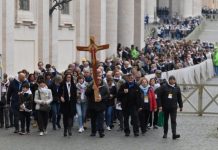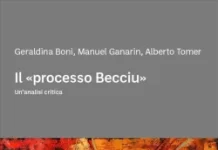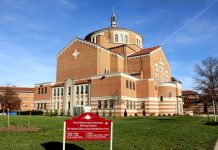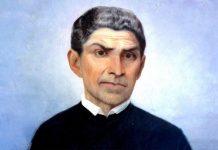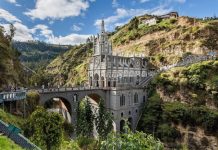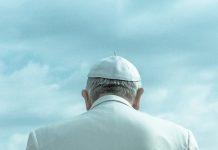The trial began in July and will resume on December 14. It has yet to get off the ground after procedural disputes over missing transcripts related to the prosecution’s investigations. Four of the original ten defendants have had their charges at least temporarily dropped, leaving just six defendants currently on trial.
Newsroom (08/12/2021. 8:34 PM Gaudium Press) A recent decision by the president of the tribunal to formally exonerate Msgr. Alberto Perlasca, the Vatican official who initially signed the 2018 agreements, is generating further questions: whether more senior Vatican leaders — possibly including even Pope Francis — were the parties who greenlit the damaging financial agreement.
The six defendants currently on trial include: the former deputy secretary of state (sostituto) Cardinal Giovanni Angelo Becciu, who is charged with abuse of office and subornation; the ex-president and director of the Vatican’s finance authority, René Brülhart and Tommaso Di Ruzza, charged respectively with abuse of office and with embezzlement and violating confidentiality; the Vatican’s investment manager Enrico Crasso, charged with fraud; Italian financier Gianluigi Torzi, charged with extortion, embezzlement, fraud, appropriation, money laundering and self-laundering; and Cecilia Marogna, a manager charged with extortion. Raffaele Mincione, a London-based investment manager who is a central figure in the London deal, is also having his charges that include fraud and embezzlement revisited. However, his chances of being tried increased last month when his efforts to have a London court rule that he had “acted in good faith” failed.
What did exactly happen?
The scandal’s origins date back to 2014 when the Vatican’s Secretariat of State invested an initial 200 million euros in a fund operated by Mincione. About half of that money was invested in a prestigious London building and the rest in other investments run by the fund.
The financing came from loans by Swiss banks and off-balance sheet funds belonging to the Secretariat of State’s asset portfolio, funded in large part by Peter’s Pence donations from the faithful.
In November 2018, the Holy See decided to exit Mincione’s fund. The Vatican was losing money on some of the fund’s investments. According to Vatican prosecutors, 18 million euros had already been lost from the Vatican’s original investment). It also decided to buy out the remainder of the London building as the mortgage payments had become too onerous.
But rather than stem the losses on these investments, the problems multiplied after the Secretariat of State hired Italian financier and broker Gianluigi Torzi decided to exit the fund and buy the remaining shares of the property. As reported by the Financial Times, Mincione was a close business associate of Torzi and owed him almost 30 million euros in loans stemming from a failed business venture several months earlier.
in order to gain outright ownership under the deal brokered by Torzi, the Vatican not only had to pay Mincione for his share in the property based on an allegedly inflated valuation (a figure similar to the sum Mincione owed Torzi although both men deny any connection), but Torzi also assumed control of the property investment through a fund of his own.
According to the Vatican, Torzi then made surrendering control of the property conditional on the Vatican’s payment to him of an allegedly extorted fee of 15 million euros. The Vatican was forced to pay because Msgr. Perlasca, head of the Office of Administration in the Secretariat of State, had signed the contract.
All told, the Vatican said it had put some 350 million euros into the property, now expected to sell for two-thirds of that price, incurring a loss to the Holy See of 115 million euros. For his part, Torzi said these charges against him were a “misunderstanding.”
Msgr. Perlasca’s Actions
Last month, a Vatican magistrate hearing this case and acting on behalf of the president of the Vatican tribunal, cleared Msgr. Perlasca of all wrongdoing in a decree of dismissal, as he was unaware of the “activities to which he was contributing” when he signed the termination agreements. The official had already been exempted from having to testify in August 2020; having agreed to be a star witness for the prosecution.
“The agreements of November 22, 2018 were signed not only without any awareness on the part of the Secretary of State of the existence of 1,000 shares with voting rights” — the means by which Torzi secured control of the London property — “but also due to a decisive work of misinformation, of which Msgr. Alberto Perlasca was himself a victim, of the crime of fraud carried out by a group of persons accused in the cited criminal proceedings.”
Vatican jurists say the decree of dismissal has the same weight as a sentence, meaning it is based on proven facts, rather than in mere hypothesis. However, even if Msgr. Perlasca was unaware of the allegedly fraudulent actions of Torzi and Mincione, public records appear to indicate he was the Vatican official who had the most intimate knowledge of the London deal’s financial mismanagement: he had signed the November 2018 exit agreement conducting to the massive losses. Plus, long with Tirabassi and Vatican investment manager Enrico Crasso, he was involved in the talks leading to the agreement.
The Vatican indictment
The Vatican indictment also states that when he signed it, Msgr. Perlasca “lacked any authorization” from his superior, Archbishop Edgar Peña Parra, the sostituto, or deputy secretary of state. It said Msgr. Perlasca’s superiors only gave authorization on November 27, 2018, after Cardinal Pietro Parolin, the Vatican secretary of state, had, in turn, granted his approval through a “handwritten memorandum.”
Based on a 20-page memorandum Archbishop Peña Parra submitted to the Vatican prosecutors, the indictment asserts that it was not until a month later, on December 22, 2018, that the sostituto “learned of the real content of the agreements” signed by Msgr. Perlasca. The indictment also says Perlasca and Tirabassi conducted the negotiations “without ever informing any of their superiors.” Exchanges between them, contained in the indictment, said they had “the precise awareness that they would later have to face the issue of how to inform their superiors about what happened in London.”
The indictment added that Archbishop Peña Parra gave extraordinary power of attorney to Msgr. Perlasca only “after the fact, on November 27” and stated that at this time Cardinal Parolin and the archbishop were presented with the terms of the transaction “in interesting but opaque terms.” The cardinal nevertheless gave his approval “having received assurances regarding the validity of the transaction (that could be advantageous to the Holy See), its transparency and the absence of reputational risks.”
One notable aspect of the decree of dismissal is that it states Msgr. Perlasca was “subjected to very strong psychological pressure to sign urgently and immediately” the November 22 agreement, although no evidence has been presented to confirm who allegedly pressured him or why that pressure was exerted.
Although the Vatican indictment says that Archbishop Peña Parra was unaware of the “real contents” of the Torzi-brokered deal, Msgr. Perlasca has always insisted that he was acting with the approval of his superiors, in particular the archbishop, who was his immediate superior. Torzi has always claimed that top officials at the Secretariat of State, including Cardinal Parolin, fully approved his plan.
Torzi’s lawyer, Ambra Giovene, said that two weeks before the November 22 deal was made, Archbishop Peña Parra had been given “signature powers on every contract of a banking and investment nature, on grants and underwriting, deposits, withdrawals, payments, purchase and sale of securities in the name and on behalf of the Secretariat of State.” But she said he also had the power to delegate those powers to other officials such as Msgr. Perlasca and that he gave Msgr. Perlasca “the powers to sign with a single signature” the November 22 agreement.
In the Vatican indictment, Torzi is on record as stating, “The sostituto did not have full knowledge of how Tirabassi, Crasso and Perlasca moved the financial levers of the Secretariat of State. I can say this because in my conversations with the sostituto, he [Peña Parra] seemed to me truly desperate to take note of how the situation had been managed up to that moment.”
Torzi was arrested by the Vatican authorities last year and then released on bail on condition he would collaborate with Vatican investigators.
How much did Pope Francis know?
During the recent hearing on November 17, a recording showed Msgr. Perlasca, who signed a deal on behalf of the Vatican, telling Vatican prosecutors last year that Pope Francis knew of the Vatican’s decision to sign the final agreements with Gianluigi Torzi, an Italian broker and investment manager.
The allegation that the Holy Father knew of the Torzi negotiations coincided with previously published reports and Torzi’s own assertion that Francis attended at least two meetings during which the Italian broker claimed he discussed the final terms of the investment deal that took place on November 22, 2018. It would also match observers’ speculation that the Vatican secretary of state, Cardinal Pietro Parolin, would not have given his belated approval on November 27, 2018, without consulting the Holy Father.
More significantly, the videotaped evidence shown to the court revealed that Msgr. Perlasca made a sensational claim during questioning last April — four months before he had agreed to become a star witness for the prosecution — that the Pope prevented Torzi’s alleged extortion efforts from being reported.
The Leaked Video
In his testimony shared with journalists on November 17, a portion of which was leaked to Corriere della Sera on December 3, Msgr. Perlasca said he stood “for reporting these men and requesting a preservation order and that is why I was cut off.” He also claimed he was the most resistant to Torzi, resulting in the relationship with him eventually breaking down. “I didn’t want to give him one penny,” Perlasca said.
When deputy Vatican prosecutor Alessandro Diddi asked “who cut off” his suggestion, Msgr. Perlasca replied, “[Archbishop] Peña Parra” — who is Cardinal Parolin’s deputy, or sostituto. Asked why Peña Parra would do that, Msgr. Perlasca responded, pointing upwards: “Because instructions from the top were to negotiate.”
“The Holy Father?” asked the interrogator, to which Msgr. Perlasca responded: “Certainly, certainly.”
A heated discussion
A heated discussion then followed: Diddi interrupted Msgr. Perlasca to insist that “the Pope did not say ‘Negotiate with Torzi,'” adding that nor did Vatican officials force the Pope into negotiations “because they wanted to carry out extortion against [the Pope].
“You must realize this is an extremely serious thing for you to say,” Diddi said. “You make it sound as though the Pope told you to negotiate. I won’t accept this because the documents don’t say this.” He added later in a recording heard by the court that Perlasca’s claim “really screams of vendetta.”
Diddi then made an admission: “Before doing what we’re doing now, we went to the Pope to ask him what happened and I’m willing to doubt everyone except the Holy Father.” He said that Msgr. Perlasca’s story was, therefore, “ludicrous and fortunately the [legal] papers support this conclusion, and so to say that you negotiated with Torzi because the Pope told you to do so is something extremely shameful.”
Did the Pope suggest negotiation with Torzi or not?
And yet other witnesses, including Archbishop Peña Parra, have suggested the Pope indicated the Vatican should negotiate with Torzi rather than sue him to recover complete control of the property. In a 20-page memorandum obtained by Associated Press, the sostituto said that by November 2018, Francis had made clear that he wanted to lose as little money as possible to finally secure ownership of the building, “turn the page and start over.”
Faced with either suing Torzi or paying him off to regain control, Archbishop Peña Parra said the second option was chosen “because it was considered more economical, with more contained risks and in a more manageable time frame. It also simply aligned with the desire of the Superior” — a reference to Pope Francis.
Another comment from Diddi is also notable in the leaked videotaped interrogation: he said that when negotiations with Torzi were interrupted, “at one point Torzi asserted himself, because he had something which we still haven’t deciphered but we have some idea.”
Crasso’s lawyer, Luigi Panella, drawing attention to the hitherto unknown fact that the prosecution had questioned the Pope, asserted that the Pope now appears to have been a key witness for the prosecution, and therefore the transcript of his exchange with Diddi should be provided to the court. However, Panella also conceded that the Italian penal code of 1913 in force at the Vatican “does not permit the monarch to be heard.” Nevertheless, the Pope could volunteer to testify if he believed it might help bring clarification.
For his part, Diddi denied that his comments to Msgr. Perlasca implied he had asked the Pope, telling the court on November 17 that he was referring to previous public statements the Pope had made, particularly Francis’s remarks during an inflight press conference on return from Japan in 2019.
Those remarks, however, make no specific reference to Torzi but rather the London property deal in general.
(Via files from Edward Pentin and other resources)








